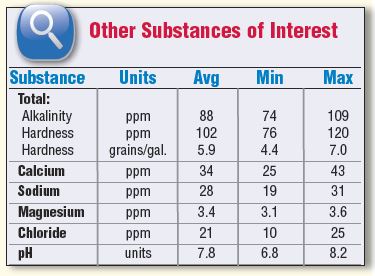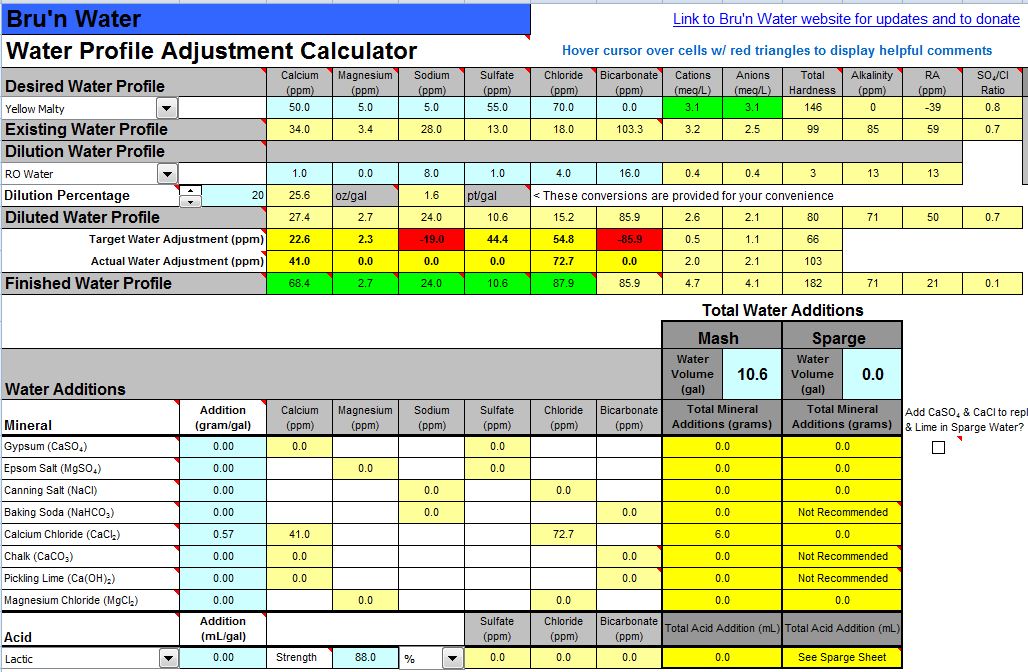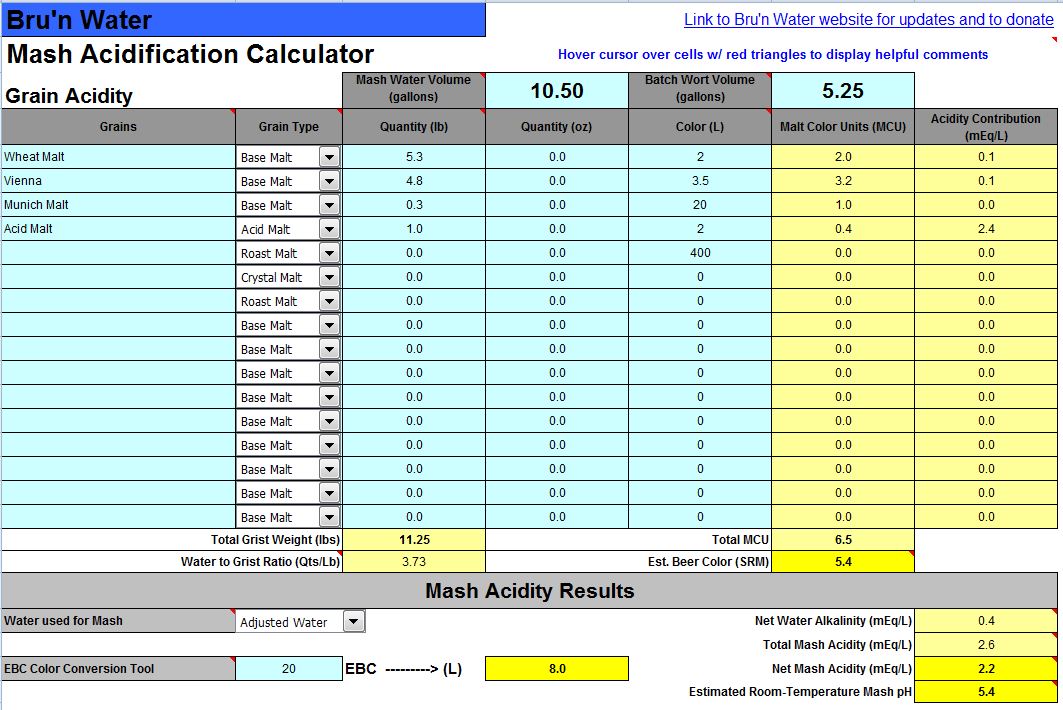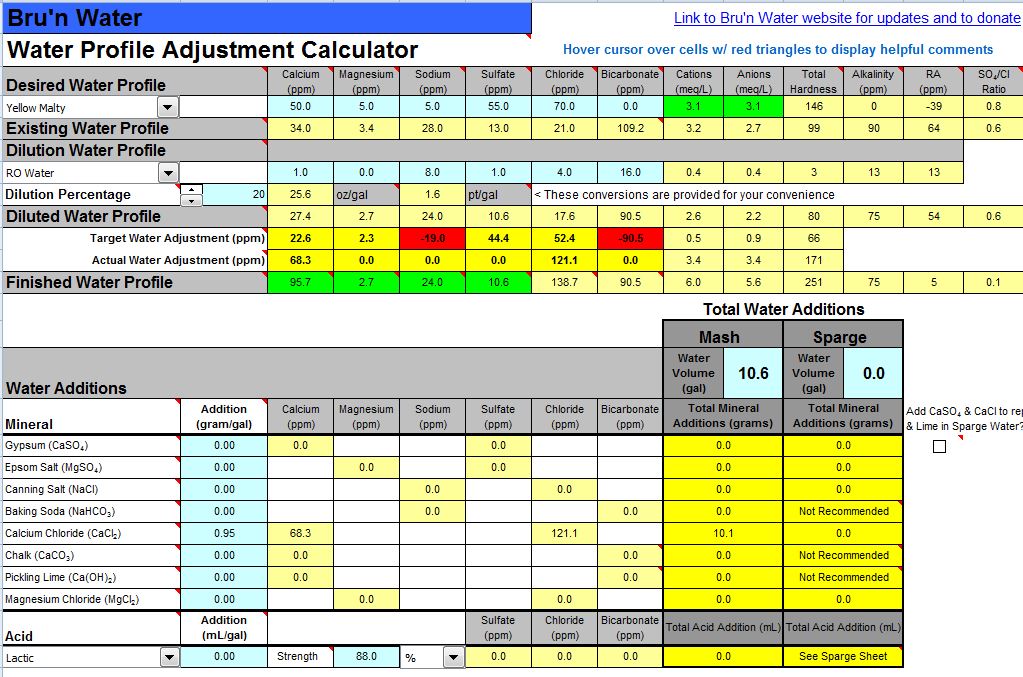Hello,
I am moving to BIAB after batch sparging for about 10 years. I will be doing a full mash volume without sparging and am cautious about the Bru'n Water pH adjustments I am getting.
With my old setup I typically use about 5.25 gallons in the mash and 5.25 for the sparge. Grain bill is usally around 10-11 pounds. With the boil off and my efficiency this would yield about 5.5 gallons of 1.050 - 1.055 wort.
For lighter beers I would add 4 - 8 ounces of Acid malt to the mash along with 1/2 tspn of CaCl. I would also add .35 ml of lactic acid to my sparge water. 2 gallons of RO water are used to dilute my mash water as well.
When I adjust this recipe for BIAB I wind up with a 1 pound addition of Acid malt to reach a pH of 5.4 This makes sense as I am losing the .35 ml of lactic acid and the water ratio is different but it just seems like a lot of acid malt.
Does this sound right? Thanks for your input.
I am moving to BIAB after batch sparging for about 10 years. I will be doing a full mash volume without sparging and am cautious about the Bru'n Water pH adjustments I am getting.
With my old setup I typically use about 5.25 gallons in the mash and 5.25 for the sparge. Grain bill is usally around 10-11 pounds. With the boil off and my efficiency this would yield about 5.5 gallons of 1.050 - 1.055 wort.
For lighter beers I would add 4 - 8 ounces of Acid malt to the mash along with 1/2 tspn of CaCl. I would also add .35 ml of lactic acid to my sparge water. 2 gallons of RO water are used to dilute my mash water as well.
When I adjust this recipe for BIAB I wind up with a 1 pound addition of Acid malt to reach a pH of 5.4 This makes sense as I am losing the .35 ml of lactic acid and the water ratio is different but it just seems like a lot of acid malt.
Does this sound right? Thanks for your input.














![Craft A Brew - Safale S-04 Dry Yeast - Fermentis - English Ale Dry Yeast - For English and American Ales and Hard Apple Ciders - Ingredients for Home Brewing - Beer Making Supplies - [1 Pack]](https://m.media-amazon.com/images/I/41fVGNh6JfL._SL500_.jpg)















































